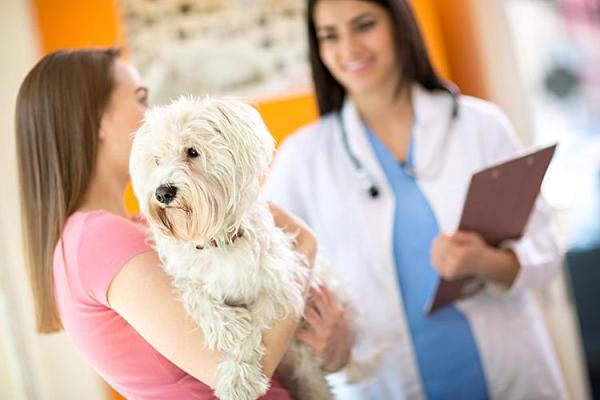Is My Male Dog in Heat? - Sexual Maturity in Canines



See files for Dogs
If we say that a dog is in heat, many of us know that it has something to do with their sexual maturity. If we have dogs of our own, then we may associate it with problematic behavior they exhibit during this time. However, many people apply the term ‘a dog in heat’ to male dogs also. But does the same term apply? Is your male dog in heat? While the two circumstances are very much related, there are some clear distinctions which should be made between the two.
AnimalWised explains the difference between sexual maturity in male and female dogs. We also explain some of the characteristic symptoms and behaviors which help us to understand what to do during this time.
What does it mean when a dog is ‘in heat’?
To understand whether a male dog can be in heat, we need to define our terminology. Female dogs reach sexual maturity between the ages of 6 to 12 months, although some larger breeds may take up to 2 years. The length of time it takes to reach puberty depends on different factors, including breed, health and the individual. Once they are sexually mature, their estrus cycle begins.
The estrus cycle in female dogs goes through four main stages which usually lasts between 2 to 4 weeks. This cycle is:
- Proestrus: the female's eggs start to mature and estrogen levels begin to rise. This stage can last for different lengths of time, but usually around 7 to 12 days. The dog is not fertile, but their vulva becomes inflamed and bloody discharge may be seen. The bitch will often lick the area to relieve frustration.
- Estrus: the dog's estrogen levels are very high and the eggs are released from her ovaries. The female dog will accept the male at this point, but her behavior will be very restless and erratic until this occurs.
- Diestrus: this phase lasts for different lengths of time depending on whether the dog is impregnated. The dog's progesterone levels are high. For this reason, pseudopregnancy can occur whereby the bitch will exhibit nesting behaviors and may even start to produce milk.
- Anestrus: this is when the female is no longer sexually active and will take a break before the next proestrus cycle begins. This may take months.
When the bitch is in her estrus phase of her estrus cycle, this is when she is said to be in heat. Her behavior at this time is dictated by her need to mate. She can grow very frustrated, leading to problems. She may rub herself on the ground, become destructive, grow more vocal or even aggressive. Most female dogs will go into heat an average of twice a year, but this can vary somewhat.
It's important to note that female dogs do bleed, but they do not menstruate. Menstruation comes from the egg not being fertilized, but a bitch will bleed in heat regardless.
Do males go in heat?
As with human females, the heat cycle for bitches is due to the maturation of eggs and their receptiveness for mating. Male dogs do not produce eggs and are not as limited to a cycle in the same way as females. Male dogs are more opportunistic and have a higher drive. This is the reason male dogs do not go into heat.
The reason why some believe that male dogs go into heat is due to their erratic behavior when they sense a female in heat. They do undergo hormonal changes when they smell the pheromones given off by the female. This is a natural behavior designed for procreation and the continuation of the species. In the wild, male dogs will compete for the opportunity to mate with the female. Since domestic dogs do not live in packs in the same way, it can lead to issues.
When a male dog is sexually active and senses a female in heat they may display the following behaviors:
- Marking: while dogs are territorial throughout the year, a sexually mature dog will often mark more excessively. They want to show a display to rival dogs that they are in charge and increase the likelihood of mating with a receptive female. They will urinate in short bursts over many objects, even in the home.
- Mounting: mounting behavior is common in sexually active dogs. They will mount and ‘hump’ various objects, other dogs and even people in their environment. They may even mount male dogs, just to relieve the sexual tension. However, excessive mounting can be a symptom of illness, stress or poor socialization.
- Territoriality: marking is not the only territorial behavior dogs exhibit. They may be more vigilant and possessive over areas and objects. They may be more likely to bark at other dogs as they pass by your property or as they are out walking with you.
- Restlessness or hyperactivity: dogs can become so distracted by their need to mate that they find it difficult to stay still. They may have more energy and become hyperactive, running in circles or doing anything they can to relieve their pent-up frustration.
- Escapism: many dogs which sense a female in heat will try to run after them. This can lead to attempts to escape and they can become disorientated and lost.
- Aggression: the term ‘dogged’ refers to someone being tenacious or ruthlessly persistent. This comes from the typical behavior of sexually mature male dogs who will stop at nothing to mate with a female dog. They are so competitive, they may even become aggressive, especially with rival males.
The above behaviors will vary according to the individual. It will depend on the levels of hormones released, something which can differ due to genetic or other reasons.

How long are male dogs sexually active?
As we state above, male dogs do not have an estrus cycle and do not go into heat as females do. Bitches will go into heat around twice a year, but male dogs can be sexually active throughout the year. There may be times when they are more likely to display symptoms such as territoriality, particularly when they sense a female in heat. Male dogs will enter into a period of peak reproductive activity when they perceive the female's odors produced by the estrus cycle.
However, pheromones are not the only influence on a male dog's sexual activity. Climate might also play a part in a male dog's peak sexual activity. In colder seasons, the dog's body needs to conserve its energy. The dog may reduce problematic behavior as they focus on survival. This does not mean males dogs won't behave problematically in winter. It will also depend on where they live as some climates are temperate year round. In general, however, the heat period for dogs will intensify during spring and summer.

How to prevent inappropriate sexual behavior in dogs
It is difficult to say whether a dog's sexual behavior is inappropriate. The problem is that we have domesticated canines. If the dog was in the wild, they would be able to play out their sexual activity in a natural way with other members of their species. Because we keep dogs with us in the family, we need to take care of their needs, but this can be difficult when they reach sexual maturity.
Part of the problem is that animal shelters already have a heavy strain with unwanted dogs. Unscrupulous breeders and negligent guardians will breed the dogs to the point of a surplus. Many people think they can take on the responsibility of looking after a dog, but then abandon them when they cannot meet this responsibility. Approximately 3.3 million dogs enter the shelter system in the USA alone[1]. While many employees and volunteers work diligently to rehome these animals, around 870,000 of these dogs are euthanized.
Fortunately, while this number is still too high, it has been going down. Part of the reason for this is due to the intensive campaigns to spay and neuter pets. Unwanted pregnancies, however, are not the only benefit of sterilizing pets.
Benefits of neutering dogs
A dog's problematic behavior during sexual maturity or their heat cycle is related to hormones. For female dogs, hormones released by the ovaries are particularly influential on their sexual behavior. For male dogs, hormones released in the testicles are the most common cause. Neutering and sterilization can take many forms, but the most effective are;
- Spaying: also known as an ovariohysterectomy, spaying is when the uterus and ovaries of a female dog are surgically removed.
- Castration: for male dogs, surgical intervention is also recommended. Castration is the removal of the testicles, although some methods employed may also use tourniquets or other ways of removing them.
Drugs can be used to prevent the estrus cycle or reduce sexual behavior. However, they are temporary, not as effective and may have unwanted side effects. Neutering is much more effective and has the following benefits:
- Reduces problem behavior: issues to do with territoriality, aggression, marking and other problem behavior highlighted above are drastically reduced. The dog will be much more even tempered and less likely to escape. By removing the ovaries, female dogs will no longer go into heat.
- Improves health: neutering can greatly reduce the chance of various diseases and illnesses which affect dogs. For female dogs in particular, they can be prone to ovarian issues such as cancer and pyometra which are not possible after spaying.
- Saves money: raising and looking after puppies (and then adult dogs) costs money. Neutering reduces the strain on your finances.
- Better for the community: stress on shelter resources are reduced and neutering dogs is better for the canine community in general.
Some claim that neutering can lead to obesity in dogs. However, if you exercise them properly and provide an appropriate diet, there is no reason they can't be healthy and happy.

If you want to read similar articles to Is My Male Dog in Heat? - Sexual Maturity in Canines, we recommend you visit our Heat category.
1 ASCA (n.d.). Shelter Intake and Surrender. Retrieved June 6, 2019, from https://www.aspca.org/animal-homelessness/shelter-intake-and-surrender/pet-statistics








